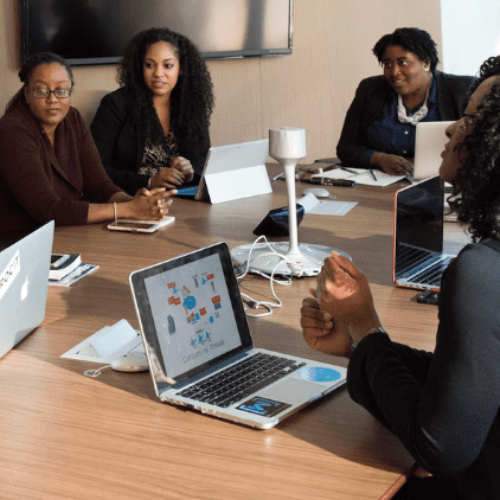
Q&A: Counties Reflect on Two Years of Efforts to Serve High-Needs Populations
Bernalillo County, New Mexico; Fulton County, Georgia; and Polk County, Iowa, each have projects dedicated to improving their systems’ responses to “high-needs” or “priority populations”—people who frequently and repeatedly encounter law enforcement, jails, emergency departments, and other social services. All three of these jurisdictions are Stepping Up Innovators and MacArthur Foundation Safety and Justice Challenge sites.
After working with these communities for two years, the CSG Justice Center asked local leaders about their experiences carrying out projects focused on priority populations, also known as “familiar faces” projects.
Question: We’ve been working with your community for two years on your project to support people who frequently and repeatedly encounter law enforcement, jails, emergency departments, and other social services. During that time frame, what would you consider your biggest accomplishment(s) in working with this population?
Answers:
Annie Uetz, CEO, Polk County Behavioral Health and Disability Services: The number one thing that makes familiar faces [projects] happen is relationships and how well everybody is willing to work together…making sure you have really good relationships with police, fire, hospitals, mental health— basically anybody and everybody who wants to be a part of it.
Kristin Schillig, Court Support Manager, Superior Court of Fulton County: Connections to community partners and relationships. I think that’s the top thing with familiar faces [projects] because without that, you can’t get the data, you can’t get [agency staff] to volunteer to do something that they’re really not getting paid for. Without relationships, none of that would happen.
Nick Heaghney, Court Policy Analyst, Superior Court of Fulton County: Our data work was something that we were able to continuously progress on despite the pandemic.
Charlie Verploegh, Assistant Director, Bernalillo County Department of Behavioral Health Services: There were some interesting things that came out of [the pandemic] in terms of creativity in connecting individuals [to treatment and supports]. I’ve been so proud of [our community providers].
Question: What have you gained from participating in the MacArthur Foundation’s Safety and Justice Challenge and in Stepping Up as an Innovator?
Answers:
Kristin Schillig: Most of the great things we’ve accomplished, we’ve sort of copied from other jurisdictions. The only way you know what other jurisdictions are doing is if you’re connected with a community of professionals and colleagues who are making their way through this stuff like we are. Our diversion center, for example. We visited [a diversion center in] Houston and now we have a diversion center because our elected officials needed to see it. When we started this project, we invited both Bernalillo and Polk to one of our very first familiar faces projects meetings to share ideas.
Pam Acosta, Special Projects Coordinator/Resource Reentry Center, Bernalillo County Department of Behavioral Health Services: When we pull[ed] the numbers of “frequent utilizers” and we started doing simple math—even looking at how many people were going to the emergency room and putting a price on that—some of those [cases] could have been as simple as going to see a primary care physician, so you’re reducing the burden on emergency rooms. The client actually benefits from it because it may just be a matter of getting connected to services, and then you’re looking at cost savings across the board for all agencies.
Annie Uetz: Quality of life for consumers was our number one push for [this program], and also just saving time for our first responders and making sure we’re sending them for the right calls—matching level of response to level of need.
Question: What’s your biggest wish to help you support this population?
Kristin Schillig: Rethinking public safety in general…humanizing the familiar face [so] people can relate to it. We’re competing now with a narrative about crime, repeat offen[ses]…how do we help the public think differently about familiar faces and about what public safety means?
Annie Uetz: Agree with the reframing of public safety. [Recently, a police officer made a referral to our agency instead of arresting the woman.] That would have never happened before this program started. Instead of having to go to jail, we’ve figured out what you need and we’re helping you get that.
Pam Acosta: The housing situation and ability to have so many slots available for the familiar faces because they are the most vulnerable and they are the most difficult to get into services. Medication compliance, waitlists, etc. [are all barriers]. [We’d like to see] availability of on-the-spot services and lower waitlists for this population.
Responses have been edited for length and clarity.
About the author












